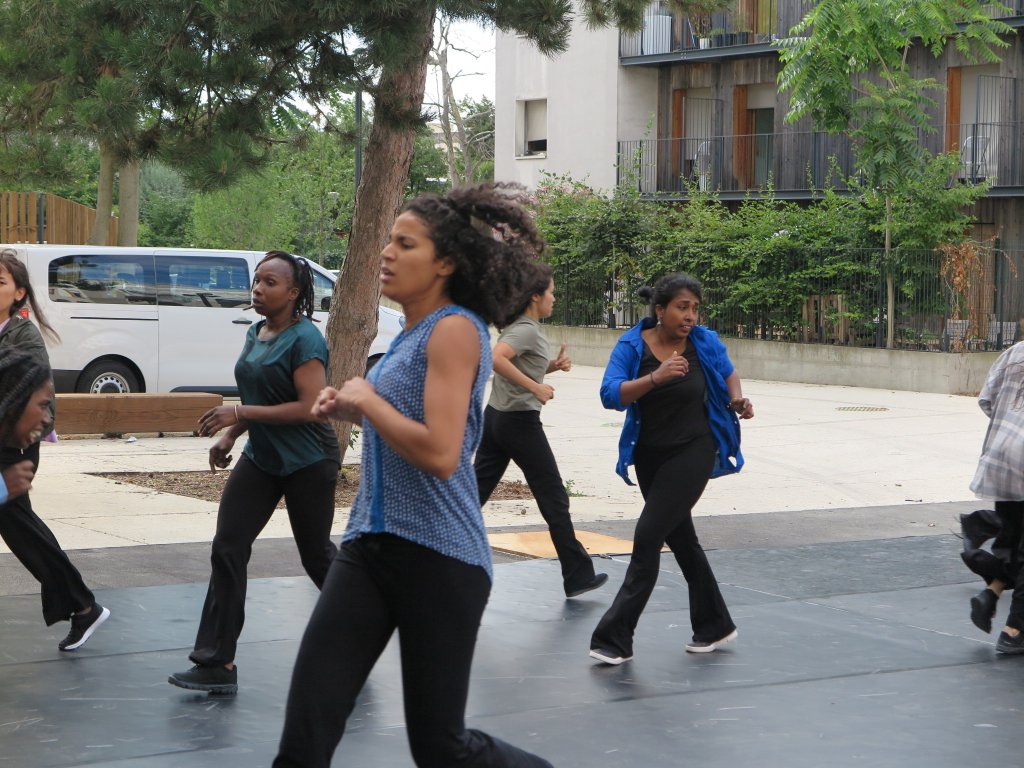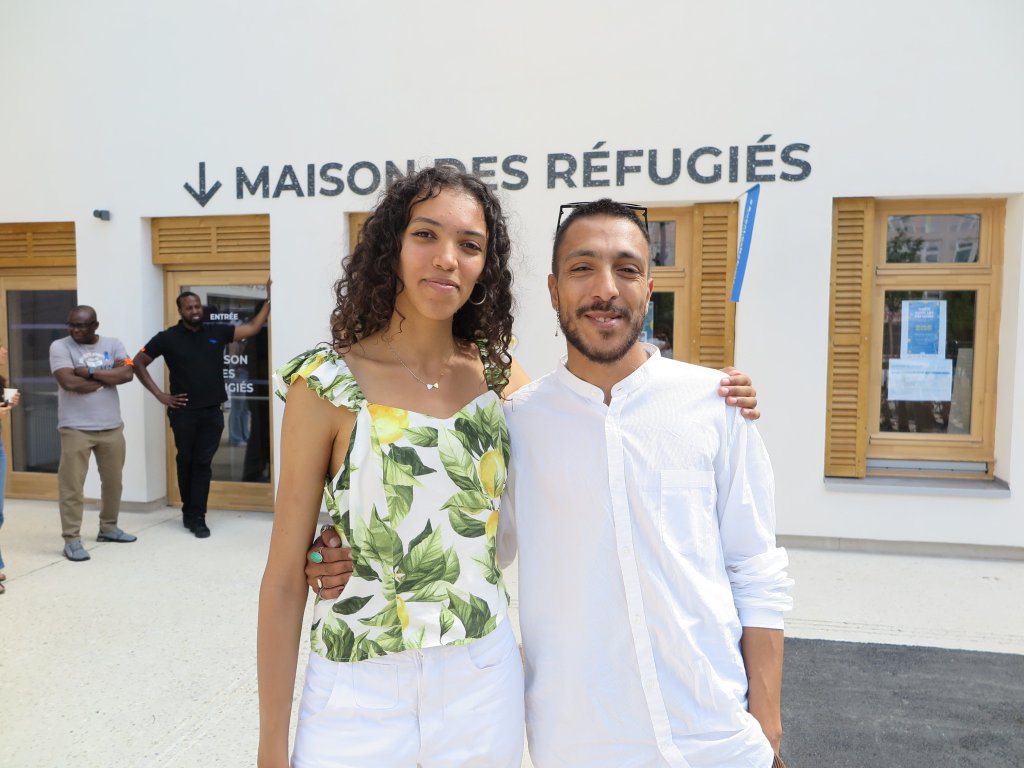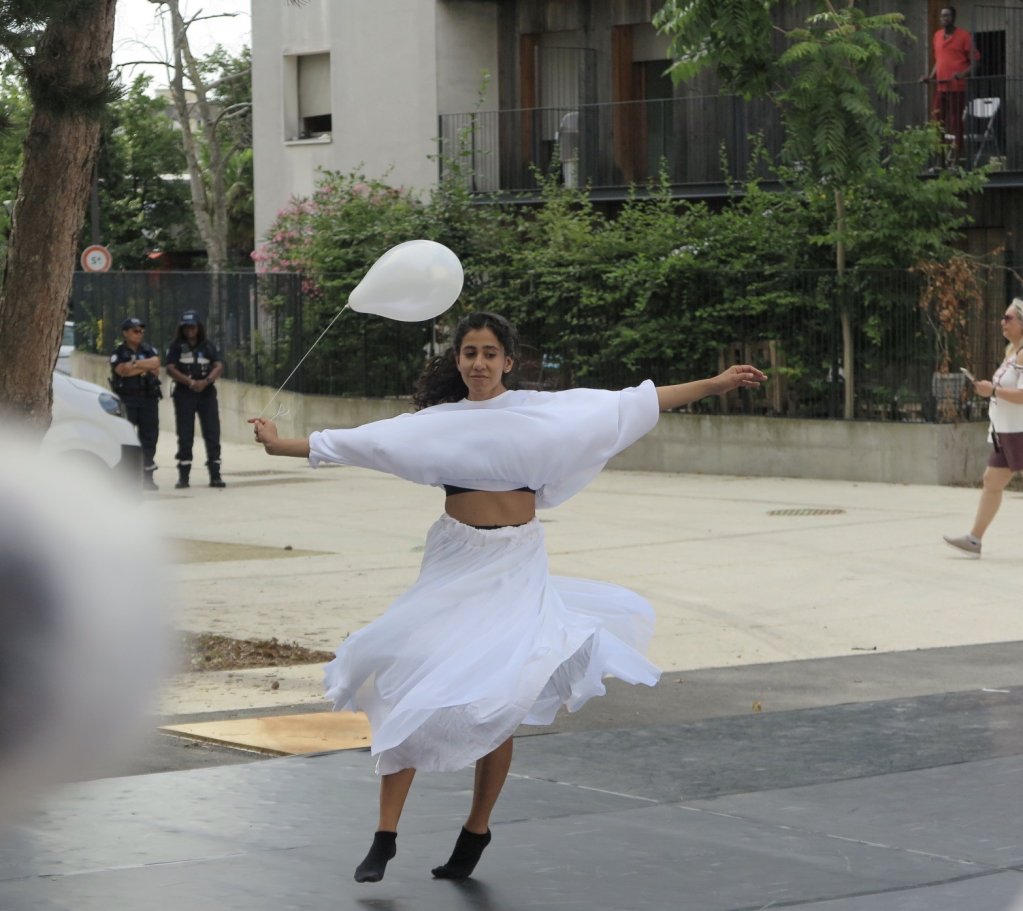Refugees in Paris devote themselves to the Albatros collaborative dance project, which evokes the various stages refugees often experience, from persecution to starting a new life.
On a bright summer day in late July, a group of 20 dancers from the Albatros collaborative dance project sat in a circle around the choreographer Sandrine Prévot and listened as she gave them instructions. "When I give you the signal, I want you all to run as fast as you can," she told them. "You might find yourself out of breath but that’s alright."
The dancers were rehearsing less than an hour before a debut performance given at the Maison des réfugiés (House for Refugees) in northeastern Paris. Choreographed by Krisildo Gucé and Olivia Maillard, and sponsored by the Kabubu association and the Olympic Refugee Foundation (ORF), the show was planned on the sidelines of the Paris 2024 Olympics to raise awareness about the refugee experience.
After over six months of practicing together, an alchemy had set in among the dancers, many of whom said they had found a support network within Albatros. The group was set to perform that day in front of the United Nations High Commissioner for Refugees (UNHCR) Filippo Grandi, several Olympic refugee athletes, as well as other guests.
The show begins surreptitiously, the same way war or conflict often catches people off-guard. Dancers walk in a large loop, as if going about their daily business, when something shifts. The music speeds up and sirens blare in the background. With panicked expressions on their faces, the "civilians" begin walking faster and faster, before finally running for their lives.

A young woman with long black braids and a yellow t-shirt stopped running for a moment to rest. "This is my social life now," she said. "When I became a refugee, they gave me a document about dance classes. I could have stayed alone in my room or gone to the classes, and I chose to come dance. It’s like I’m a new person now."
Also read: A boxer's fight for freedom on the way to the Paris 2024 Summer Olympics
'We support each other'
Her name was Shobha, and she had left Myanmar to seek asylum in France. Marzieh, a refugee taekwondo athlete from Afghanistan, joined her. "We all share our experiences with each other. If it is good news, we are happy, and when it’s sad, we just support each other and try to find a solution to figure it out," she said.
"When I came here, I was alone and I didn’t have family," said Souba, "...now you have family and from all over the world!”, said Marzieh, beaming. Souba agreed and specified that her family "was now Albatros, Kabubu, and ‘Kris’ [Gucé]," with whom she had been taking dance classes since two years ago.
The project, which is inclusive and has participants who aren’t migrants, has dancers from Afghanistan, Albania, France, Iran, Japan, Mali, Myanmar, and Sri Lanka, among other countries. The idea for the project came to Gucé while he was giving dance classes to migrants with the Kabubu association, which promotes the social and professional inclusion of exiled people through physical activities.
Gucé, who was born in Albania in 1998, has lived through the asylum-seeking procedure in France himself. The experience for him was "de-humanizing" and one that "makes you feel very vulnerable." He always knew he wanted to translate the different stages he went through into a work of performance art.
In one of the most poignant moments of the performance, an administrative figure hands a sheaf of papers to a dancer, as other "asylum seekers" wait in the background. The dancer looks at the paper and collapses on the ground, writhing in agony. A breeze carries the rejected asylum request away, while the dancer contorts himself into various positions of suffering.

Yet there are moments of hope too. In a solo performance, an exile from Iran dances on her toes while holding a white balloon, which floats above her. There is something celestial about her dance. Her light and airy movements suggest a different kind of existence, one that is far removed from the hardship and drudgery that migrants can experience in their daily lives.
Gucé met Maillard when they took part in “Avoir 20 ans en 2020” (To be 20 in 2000) by Korean choreographer Eun Me Ahn for the Théâtre de la Ville de Paris. They became best friends but it took a long time before he finally brought himself to tell her he was a refugee. He feared she would somehow see him differently if she knew the truth.
Also read: Marzieh Hamidi, Afghan refugee and taekwondo athlete, wants to defy the Taliban

A collective artistic quest to help refugees overcome barriers
"When I danced, I felt free and aligned with my values, when in reality, this wasn’t the case," said Gucé. He struggled to overcome certain barriers, and he eventually stopped dancing between 2019 and 2021. "In retrospect, it was because the contradiction between being an asylum seeker and a dancer had become too overwhelming," he said.
He only picked up dancing again when he began giving classes with Kabubu. He then re-discovered his love of dance and choreographic creation. "It was the before and after [dancing again] phase that inspired me. Also, the people who came to my classes had incredible journeys, incredible identities, and they had a strength that was beyond my own," said Gucé.
Gucé wished others could see refugees the way he saw the participants in his dance classes. It was out of this desire that the Albatros project was born, as a collective artistic quest.
"We often talk about a project and not a show," said Maillard, who has the lithe figure of a dancer and a smile that exudes pure kindness. "Albatros belongs to the 20 dancers who were here throughout the project, who gave their body and soul to the project – and not just in a manner of speaking," she added.

Speaking about the opening show the night before, Gucé said he felt overwhelmed. “I was in another dimension, seeing this journey up on stage. It all made sense.”
"They appropriated the space," added Maillard. "Up until now, we were both dancers ourselves. Adopting the role of a choreographer and not being on stage was something unforgettable. The Albatros had taken flight and we were just there to admire it."
As the dancers lined up in formation to assume the shape of an albatross, they received a standing ovation from the audience. Like the mythical seabird that travels vast distances, they too had come from far away, and they were rebuilding their lives with grace.
Also read: 'Social cleansing': NGOs blast pre-Olympic migrant evictions
